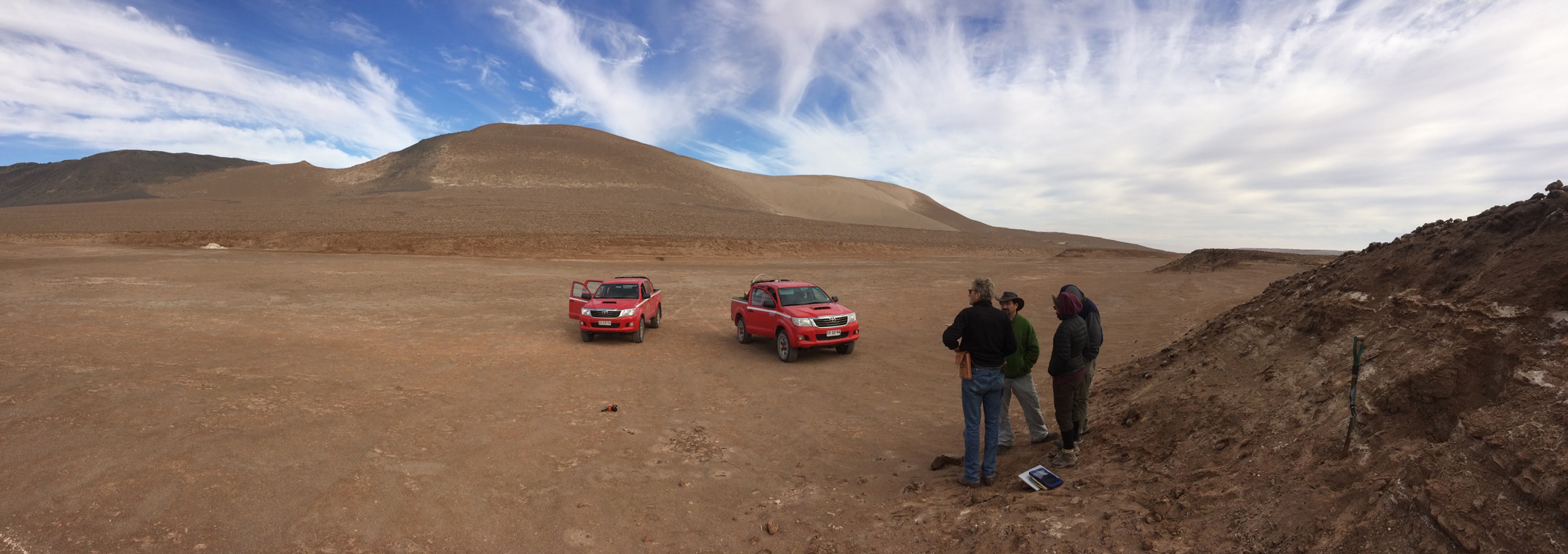
SAN FRANCISCO — The driest desert on Earth may have once been a patchwork of lakes and marshlands that supported the first settlers of South America as they populated the continent, new research suggests.
The new findings suggest that the bone-dry Atacama Desert, which now looks almost as devoid of life as the surface of Mars, may have once been an important stopping point in the colonization of the Americas.
Although the Atacama Desert, although it is a barrier nowadays, it wasn't at the time early people were settling the Americas, Marco Pfeiffer, a doctoral candidate in soil science at the University of California at Berkeley, said here at a news conference today (Dec. 14) at the annual meeting of the American Geophysical Union. [See Photos of the 10 Driest Places on Earth]
A long and winding route
Currently, scientists believe people from northern Asia holed up in ice-free refuges in the area around the Bering Strait for thousands of years, then spilled out into North America between 20,000 and 18,000 years ago and migrated rapidly along coastlines to occupy South America. The oldest known evidence of human occupation in South America was found at a Chilean site south of Atacama called Monte Verde, which was occupied sometime between 14,800 and 18,500 years ago. Unfortunately, evidence to recreate this early migration is sparse; archaeologists believe most of the first Americans traveled along the coastline, which is now submerged beneath 330 feet (100 meters) of water.
In theory, America's first settlers could have also fanned out into Chile's Atacama Desertduring this early period. But the barren moonscape is one of the most forbidding places on the planet.
Squished between two mountain ranges that block rainfall from both sides, the 600-mile-long (1,000 kilometer) expanse gets just 0.6 inches (15 millimeters) of rainfall a year. The hyperarid conditions produce a salty, cracked crust that today supports almost no plant life. [See Images of the Arid Atacama Desert In Bloom]
Because archaeologists assumed the area was too menacing for early human settlers to have occupied for long, no one bothered looking for evidence of ancient settlements. A few studies have suggested that between 7,000 and 9,000 years ago rainfall in some regions of the Atacama may have been up to six times the current levels.
Sign up for the Live Science daily newsletter now
Get the world’s most fascinating discoveries delivered straight to your inbox.
Then, in 2013, researchers published a study in the journal Quaternary Science Reviewsrevealing something extraordinary: evidence of human occupation at a site in the bone-dry heart of the desert, dating to around 13,000 years ago, Pfeiffer said.
"The only way this site could have happened is that there was a stream nearby that can supply water to this human settlement," Pfeiffer said.
Where there is water, there is life, but the reverse is also true. So Pfeiffer and his colleagues looked for evidence of water in the desert. Soon, they found it: Buried beneath a thick salt crust, they discovered evidence of ancient plants and animals, such as gastropods and phytoliths (tiny structures found in some plant tissues), which are typically found in freshwater lakes. Dating techniques using isotopes of carbon, or versions of carbon with different numbers of neutrons, revealed that the regions were wet sometime between 17,000 and 9,000 years ago.
The new data suggest the Atacama was once covered with a series of wetlands and marshes, including marshlands peppered with grasses and sedges that would have supported ancient camelid species (such as vicuna and guanaco) as well as other now-extinct mammals, Pfeiffer said. Those, in turn, would have provided sustenance for an early population of hunter-gatherers, he said.
They have also found some hints of early human occupation in the region, though the sites have yet to be excavated and no results have been published in a peer-reviewed journal, Pfeiffer said.
Original article on Live Science.

Tia is the managing editor and was previously a senior writer for Live Science. Her work has appeared in Scientific American, Wired.com and other outlets. She holds a master's degree in bioengineering from the University of Washington, a graduate certificate in science writing from UC Santa Cruz and a bachelor's degree in mechanical engineering from the University of Texas at Austin. Tia was part of a team at the Milwaukee Journal Sentinel that published the Empty Cradles series on preterm births, which won multiple awards, including the 2012 Casey Medal for Meritorious Journalism.










